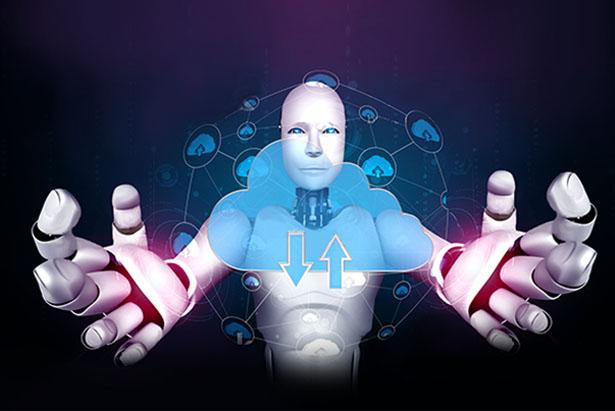The exponential growth of AI in the last decade has happened due to two specific reasons. Growth in Processing power and Growth in Storage power. Until 1999 the growth of processing power had been slow but due to exponential growth of processing power with the invention of GPUs and TPUs, AI has truly come out of the ‘AI Winter’. Kryder law states that the disk drive density tends to double every 13 months, and this has truly reduced the price of storage. With 5G technology on the anvil, the need for storage will further reduce as low latency networks will be the order of the day and the need for storage at multiple places for processing will be further reduced.
There are four powers necessary to contribute to AI’s success. Namely, Processing Power, Power of Algorithms, Domain knowledge and Data. Many enterprises want to take advantage of AI. However, transformation using AI has become a costly affair using capex systems. Usually, high powered CPIUs used by AI programs are normally not required to run the normal day to day transactions. A capex investment becomes a big problem for many businesses to deliver ROI using AI Technology. Cloud technology has come as a saving grace for enterprises to deliver ROI on AI.
To start with, IBM Watson platform has been delivered only on cloud. An on-premises version of Watson is not typically available. Many enterprises have taken advantage of Watson’s AI Capabilities specifically for prediction purposes. Watson offers Infrastructure as well as machine learning models to deliver outcomes. Other cloud companies have not been far behind in delivering service from the cloud. AWS SageMaker made an entry where large machine learning models can be built, trained, and deployed using the same. Amazon Comprehend, Amazon Code Guru etc helped AWS to offer a range of services on machine learning using their hardware.
Microsoft Azure offers a comprehensive list of AI services. This includes speech, vision, and text analytics services. Apart from this, Microsoft offers a comprehensive set of tools from a machine learning studio to enable DevOps for AI code deployment. Microsoft Azure also offers Bot Services to build a bot, deploy a bot and train a bot.
The widest range of services are from Google Cloud. Google Cloud separates the AI offering in the form of 4 services. Google offers scalable AI – Infrastructure services that enable compute engines to be attached to a GPU by default and allows scaling to a TPU. Google Compute Engines run with Nvidia processors. Google also offers horizontal APIs for Text search, Computer Vision using Vision AI and a set of Speech AIs. Google being the largest contributor to Open Sources has come out with Google BERT, making the services more robust. Google has been an AI-first company apart from a search company. GCP offers wide-ranging vertical-specific out-of-the-box AI solutions. They offer solutions on Healthcare and Life Sciences, Data Cleansing, Data Labelling and Data Analytics. GCP focuses on the complete lifecycle of AI, from data collection, data cleaning, data labelling to training the data with scalable infrastructure and deploying the Machine learning code using Kubeflow.
Cloud service providers continue to evolve with new services. The ability of the cloud service providers to provide high-end computing engines on-demand gives enterprises an opportunity to transform their business using AI. They offer a comprehensive set of AI tools and frameworks, creating an ecosystem that adds value while delivering the service.
Data References:
https://www.srgresearch.com/articles
https://www.channele2e.com/channel-partners/csps/cloud-market-share-2020-amazon-aws-microsoft-azure-google-ibm/



